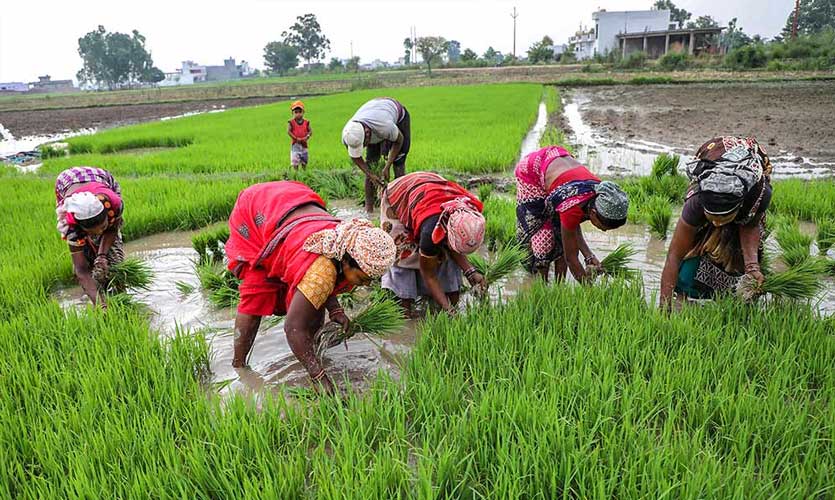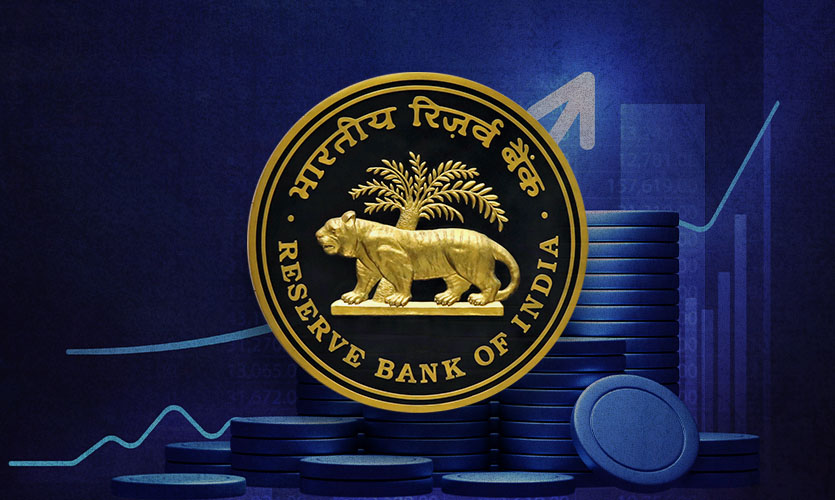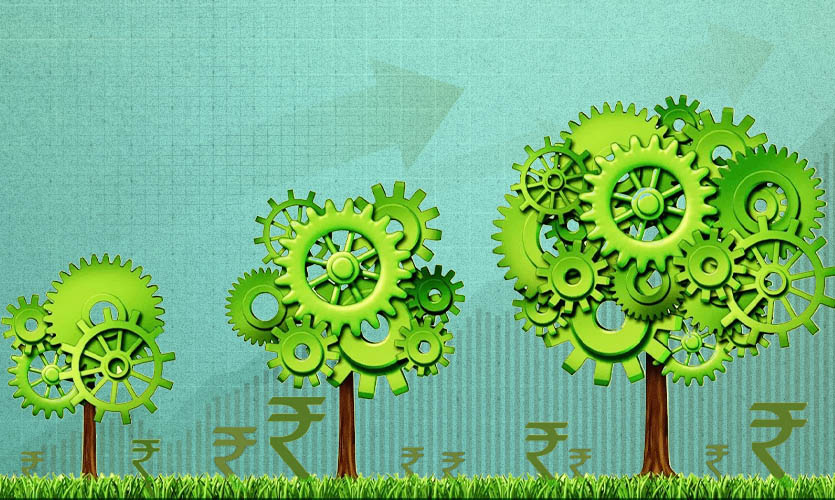An analysis by CRISIL research on Monday, concluded that there is a 32 percent rainfall deficit in the two months following June 23, which may force farmers to change their Kharif crop plans. With rainfall deficits as high as 55 percent in the northwest and central India, farmers may move from oilseeds such as soybean and groundnut to crops like cotton and maize that require less water. The total number of acres sown has decreased by 12 percent from last year.
CRISIL Report Overview
By June 23, a week before its normal onset, the southwest monsoon had officially arrived in the country. There was nearly 28 percent excess rainfall. From June 23 to July 12, the monsoon rains bailed, leading to a 32 percent deficit against the long period average. As per the report, the northwest region recorded the highest deficit of 55 percent, along with Punjab and Haryana, which recorded deficits of 70 and 80 percent, respectively. It was noted that high levels of irrigation in these states may not have an undue effect on sowing. In Rajasthan, the deficit was 58 percent during that period. This could shift the emphasis from soybeans to maize in key deficit areas if rainfall did not recover within the next ten days, according to the report.
Gujarat was particularly hard hit by the 39 percent rainfall deficit in central India. CRISIL said that a prolonged dry spell could lead to a major switch from groundnut to cotton crops in the state. In Maharashtra, the total Kharif acreage was down 11 percent as of July 16, and if the rainfall deficit does not improve, farmers may switch to cotton from soybeans. In the same vein, farmers in Karnataka are likely to grow cotton and maize in the face of a 37 percent deficit. During the Kharif season, rice crops, particularly in the east and northeast, experienced a 23 percent deficit.
A report published by the Ministry of Agriculture and Farmers’ Welfare indicates the sowing of more than 499.87 lakh hectares (LH) against 558.11 LH last year, with almost all of the major crops including moong, soybean and paddy showing a decline. The Indian Express reported that last year when there was bumper crop planting, farmers planted soybeans on over 92.36 LH of land. This has gone down to 82.14 LH this year. Moong was sown over 13.49 LH, compared to 11.92 LH this year; and cotton, the major Kharif cash crop, covered over 104.83 LH compared to only 86.45 LH now. In comparison to 2020, bajra has been planted over 15.74 LH as opposed to 25.32 LH previously. There has also been a minor dip in pulses, from 53.35 LH last year to 52.49 LH this year. There are several exceptions such as sugarcane, which was sown over 53.56 LH of land versus 52.65 LH last year.
The Monsoon Dip
With the revised monsoon onset and withdrawal calendar followed by the India Meteorological Department (IMD) since 2020, the normal date for rains to reach every region in the country is by July 8. In a similar report, India Express noted that the country received an estimated 229.7 millimetres of rainfall by July 9 – 6 percent less than the average of 243.6 millimetres – with rainfall deficits marked in all but the first two weeks of June. The most significant deficit of 18 percent has been reported by northwest India. Delhi ranks among the worst affected states with a rating of a negative 58 percent.
In light of this dwindling monsoon, one would think the best course of action is to switch crops to find greater profits for farmers, for example, with cotton and maize. With many mandis experiencing below-minimum support prices, there is likely to be a decline in the area under oilseeds and pulses. Farmers are agitated because their product is not being lifted by government agencies, and traders are also not buying ahead of the GST. “Cotton and maize yielded better prices than soybean, tur and groundnut last year. Farmers might shift to such remunerative crops,” said vice-president of Kotak Commodity Services, Aurobinda Prasad, to the Business Line.
India’s Oil Story
Prior to Independence, India was an exporter of edible oil. The country became self-sufficient after Independence until the early 1970s and regained efficiency in the early 1990s until 1994. According to the Wire, India is now the biggest importer globally. Historically, oil preferences developed among regional populations and have become a part of our cultural heritage. 96 percent of Indians’ consumption of edible oils was made up of groundnut, mustard and cottonseed oil in 1973-74. Traditional extraction of oilseeds was performed by cold pressing and then filtering, a method that enabled small-scale processing and employed generations of workers. It also advocated localised distribution and procurement networks that left a smaller carbon footprint. The system was therefore sustainable and virtuous.
India’s agriculture landscape has been radically altered by lower monsoons and changes in consumption patterns. Approximately, US$10 billion worth of edible oil (15 MT) is imported into India every year, making up nearly 70 percent of our annual edible oil requirement of 23 million tonnes, even though we grow oilseeds at home. Primarily, changes in preferences account for this. While people have switched to alternatives like palm oil and dalda, farmers have opted out for remunerative crops. Thus, cotton being replaced with oilseeds not only upsets the agrarian sector, but also the socio-economic sector. As oilseed production increases, a country not only produces edible oil but also oil cakes and crude oil extraction, which are raw materials for dairy (cattle feed) and poultry industries (poultry feed). By importing more edible oil, we are denying livestock and poultry the protein required and eventually, this could lead to having to import corn and perhaps soya. In addition to the detrimental effect of palm oil on the environment, we are also affecting our health negatively.
The government has traditionally subsidised both water-intensive and fertiliser-favoured crops like paddy, wheat, and sugarcane to encourage their cultivation even in water-scarce areas like Punjab, Haryana, and Uttar Pradesh. Due to this, rice, wheat, and sugar reserves have accumulated, while pulses and oilseeds are in short supply, and groundwater is being depleted.
According to Down to Earth, research conducted by the Central Research Institute for Dryland Agriculture, Hyderabad, shows that less crop diversity is often associated with low profitability, declining fertiliser response and soil fertility, and greater exposure to price and yield risk. Water-intensive crops such as paddy provide farmers with stable yields with guaranteed procurement arrangements at minimum support prices (MSPs) at the village level. Therefore, despite intensive persuasion, farmers do not want to change from paddy to pulses, oilseeds, and cotton, which have the potential to replace the water-intensive crop in water-scarce regions. Furthermore, such alternative crops demonstrate wide fluctuations in relative profitability over a prolonged period of time. The price for cotton declined in 2017, but not as steeply as has been the case with oilseeds and pulses. A bale of medium staple cotton currently trades at ₹11,477 (170 kilograms), down by 4.7 percent from its previous rate.
Read more: India’s Green Transition And The Way Forward
Possible Solutions
In order to make crop diversification more profitable than paddy over relatively long periods, the government must implement policies. In the same article, Down to Earth notes that farmers should be protected from this bottleneck by government pricing policies. It is possible to accomplish this by announcing an MSP backed by enough procurement so that farmers can choose acreage based on the MSPs rather than on prices from last year. To increase yields of alternative crops, the government must focus on technologies to develop and spread beside the stable price policy. A major barrier to crop diversification is groundwater access. Thus, districts with a heavy reliance on groundwater, like the ones practising borewell irrigation, should be the priority focus areas for crop diversification plans so that results can be seen sooner. In order to irrigate barren fields, implementing these policies will be more difficult than waiting for the yearly monsoon.










